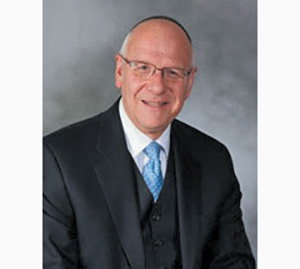
Parshat Bamidbar
Sefer BaMidbar, which we begin this Shabbat, begins with the events that took place in the beginning of the second year of Bnei Yisrael’s sojourn in the desert and closes with those events that occurred only a few months before their entry into Eretz Yisrael. Clearly, the bulk of the nation’s desert experiences take place during these years. Our haftarah, a selection taken from the second perek of Sefer Hoshea, opens with the nevuah that the population of Israel would increase so that eventually it “could not be counted,” a fitting choice of haftarah for the Torah reading that speaks of counting the nation.
But there is more than the opening of the haftarah that connects it to our parsha. After delivering harsh words berating the nation for her faithlessness, the navi tells of a time when the relationship, once torn asunder, will be repaired, a time when Hashem and His people will reconnect. The prophet expresses this rapprochement with the words “Behold, I will tempt her and lead her into the desert and speak to her heart.” It is in the desert where God starts to rebuild the relationship because it was in the desert, BaMidbar, where that relationship was first formed.
We usually view the desert experience as no more than the years of punishment imposed upon Israel for her rejection of Eretz Yisrael, a result of the Chet Hameraglim, the sin of the spies. But the truth is that the extra 39 years they sojourned in the wilderness were more than a simple punishment. Hashem realized that a slave nation could not, overnight or even over a few years, reform itself and become a faithful generation, willing to risk everything in order to realize the dream Hashem had offered them of conquering and dwelling in the Land of Israel. The people had to develop a closeness, an attachment to God that would become part and parcel of their very national character. The years in the desert did just that. Israel became one with each other and one with God. It is for this reason that Hoshea speaks of God leading Israel “into the desert” as a way of wooing her back and reestablishing the special covenantal connection they once had.
The navi Yirmiyahu put it quite clearly. God, he said, remembers the kindness you showed Him in your formative years. “Zacharti lach chesed ne’urayich” He says. “Ahavat klulotayich, the love you showed during the period of betrothal.” And what was this “kindness” of which the navi speaks? How did Israel show her love? “Lechtech acharai bamidbar, That you followed Me through the desert!”
We were formed in the midbar; we bonded in the midbar; we were betrothed in the midbar. How fitting that the closing words of our haftarah echo this very message. For when that relationship is repaired, God promises: “V’erastich li l’olam, v’erastich li b’tzedek uv’mishpat uv’chesed uv’rachamim…And I shall betroth you unto me forever, and I shall betroth you unto me with righteousness and justice, with kindness and mercy…,” words that we say each weekday as we place God’s “engagement ring,” our tefillin, around our fingers.
Very fitting indeed.
By Rabbi Neil N. Winkler
Rabbi Neil Winkler is the rabbi emeritus of the Young Israel of Fort Lee and now lives in Israel.










